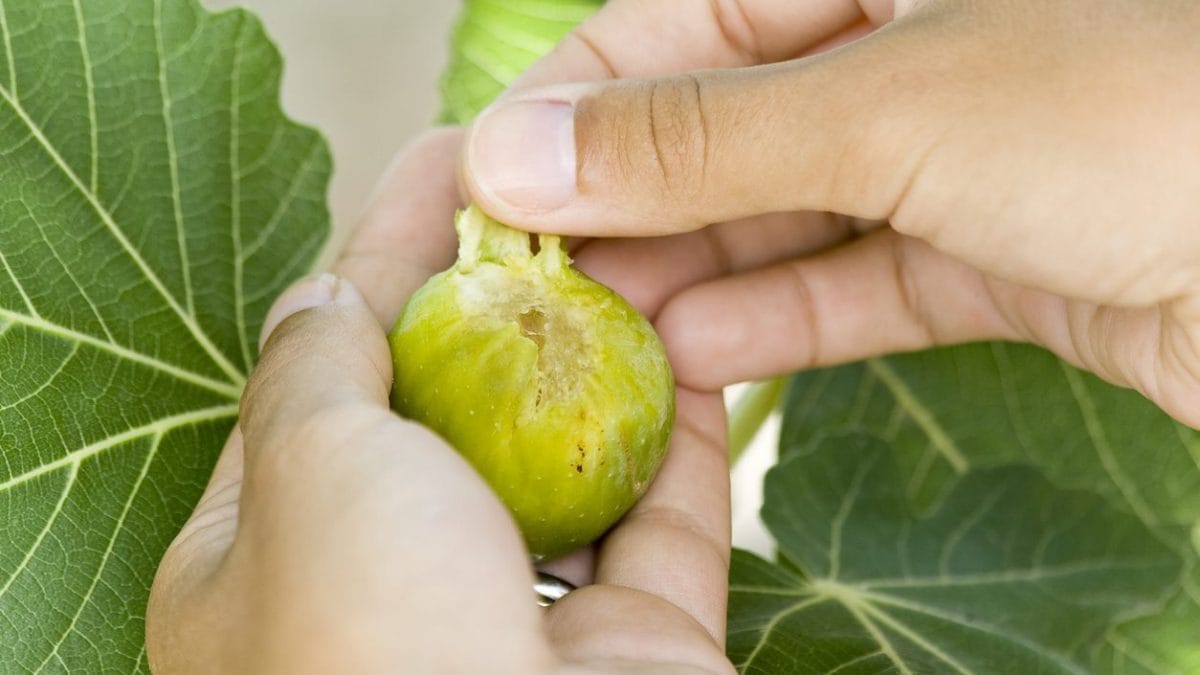
Sweet, sugary, rich in properties: figs are exquisite, one of the most loved summer fruits and present in nature in many different varieties. They are excellent to enjoy fresh, dried, as a snack or as an ingredient in the most varied recipes. But have you ever wondered what to do with the skin?
As with many other fruits, before eating figs it is legitimate to ask yourself whether the peel is edible or not. Often on this type of dilemma there is a lot of confusion and there is never a precise answer, so today we finally answer the question: can fig skin be eaten?
Fig Skin: Yes or No?
Let's clear up the doubt right away: yes, the skin of figs is absolutely edible, you just have to remove the stalk and then you can easily consume the whole fruit, provided of course that you have previously washed it very well. The skin of figs, in fact, is entirely edible and, as in the case of many other fruits, also rich in many properties. It's up to you to choose whether you like the taste or if you prefer to eliminate it: you don't have to worry about losing the beneficial effects of the fruit, because the fig also contains just as many in the pulp.
You can eat the skin of any variety of figs, but in general if you prefer not to peel them, choose the smaller and more tender figs because they have a thinner skin that is more pleasant to the palate. Generally, early season figs have these characteristics, while late season figs tend to have a thicker and more robust skin. You can still eat it, but its texture may be more unpleasant.

Before eating figs with the kin, remember to:
- Choose organic figs. If you are particularly careful about the quality of the products, it is advisable to choose organic figs, which have not been treated with pesticides.
- Wash them well. Before consuming figs, it is essential to wash them thoroughly under running water to remove any residue of soil or harmful substances.
- Listen to your body. If you experience digestive problems after eating fig skin, it is best to avoid it.
When is it best to avoid fig skin:
- If you have doubts about the origin. If you are not sure whether the figs are organic or sustainably grown, it is best to avoid consuming the skin.
- In case of allergies or intolerances. If you have food allergies related to figs, it is advisable to consult a doctor or allergist before consuming fig skin.
- If you have skin problems. If you suffer from dermatitis or other skin conditions, it is best to avoid direct contact with the skin.
Fig Skin's Properties
Many popular beliefs and legends are linked to the skin of figs, so much so that once upon a time the saying “do as the ancients did, who ate the peel and threw away the figs” was often used to underline how beneficial the skin of the fruit was, even more than the pulp.
In fact, it was believed that the skin of figs was able to increase muscle mass and therefore was particularly beneficial and energetic. Obviously, this is just a legend: the skin is simply rich in fiber, mineral salts and vitamins just like the pulp.

Fig Skin: How to Enjoy It
The best way to enjoy fig skin is to eat it in one bite while it is still attached to the fruit, but alternatively you can always transform it in some ways that will make it even more delicious. First of all you can create a delicious nutritious snack: you will have to wash the skin, dry it, spread it out on a baking sheet whole or separated into strips and then sprinkle it with a little sugar. At this point you will dry the skin in the sun or in the oven and there you have it, an energetic and delicious snack.
Fig skin is very rich in pectin, a natural thickener used to solidify jams and preserves. If you prepare fig jam, therefore, remember to add the skin to the mixture: you can wrap them in gauze to remove them more easily at the end of cooking and thus take advantage of their thickening properties while also reducing cooking times.
;Resize,width=767;)
